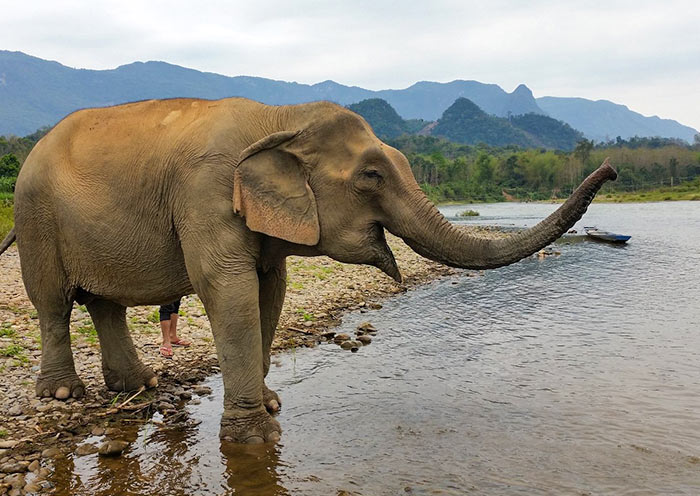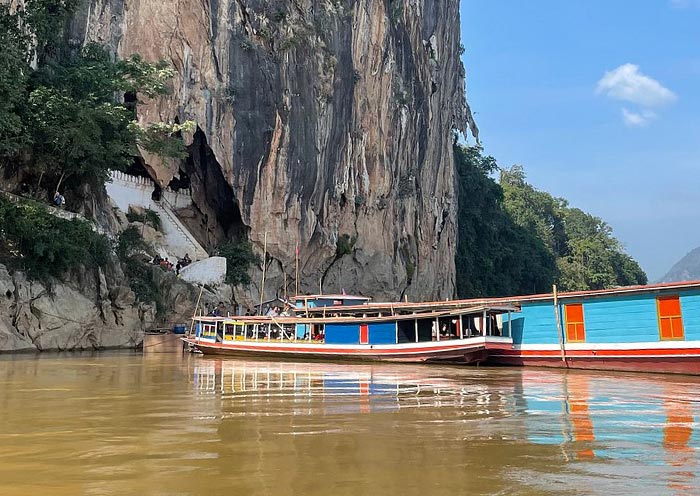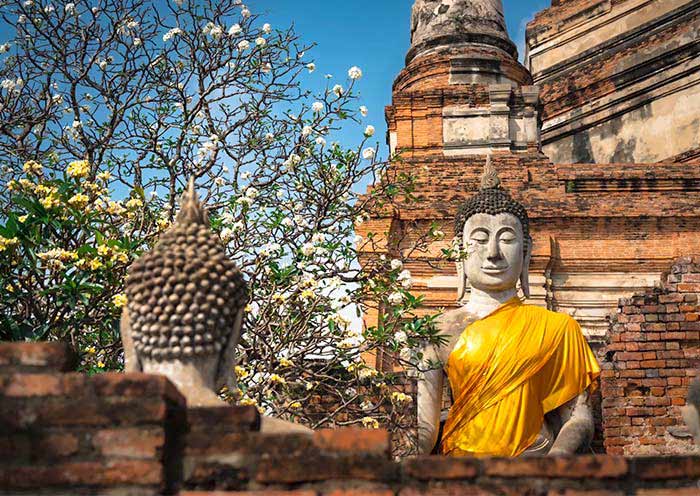We traveled with 7 lady friends. Our trip with Asia Odyssey Travel was so well planned, and seamless. Our time in Bhutan was exceptional, being led by Ugyan and Doji. What two very wonderful men. They were both so very knowledgeable, kind, and helpful. I cannot say enough good about our time in Bhutan with these two good men,...our guide and driver. Thank you Asia OdysseyTravel!!! p.s. Our trip was planned by Tony of Asia Odyssey. He was amazingly helpful, and planned our trip flawlessly! Thank you, Tony!
5 Days Laos World Heritage Tour to Luang Prabang: Explore Land of a Million Elephant
- Highlights
- Itinerary
- Price
- Trip Notes
- Accommodation
- Photos
- Reviews
Laos Luang Prabang Tour: From World Heritage City to the World of Elephants
Why Laos Luang Prabang Tour? Luang Prabang, a former royal capital and UNESCO World Heritage Site in Laos, is renowned for its exquisite temples, relaxed ambiance, and stunning natural scenery. Take our 5 Days Laos World Heritage Tour to Luang Prabang and explore the Land of a Million Elephants with close contact with Elephants.
Our Laos World Heritage Tour provides a leisurely and serene city walk within the Old Town of Luang Prabang, a designated World Heritage City. Enjoy a delightful stroll along the riverside promenade, admire the charm of traditional wooden houses, marvel at royal structures and French colonial architecture, and explore over 30 Buddhist temples (wats). After the Temple hop, take a moment to savor a cup of coffee at a local café while awaiting the enchanting Mekong River Sunset.
Furthermore, our Laos Luang Prabang tour includes exciting outdoor activities such as swimming in the picturesque Kuang Si Waterfalls, embarking on a boat trip to the Pak Ou Caves, and hiking through the jungle with elephants.
Take our 5 Days Laos World Heritage Tour to Luang Prabang, and discover the Buddhist Country that offers tranquility, spiritual experiences, and natural beauty. Contact us to book your immersive Laos Luang Prabang Tour, where you can enjoy the best price and a leisurely pace throughout your journey.
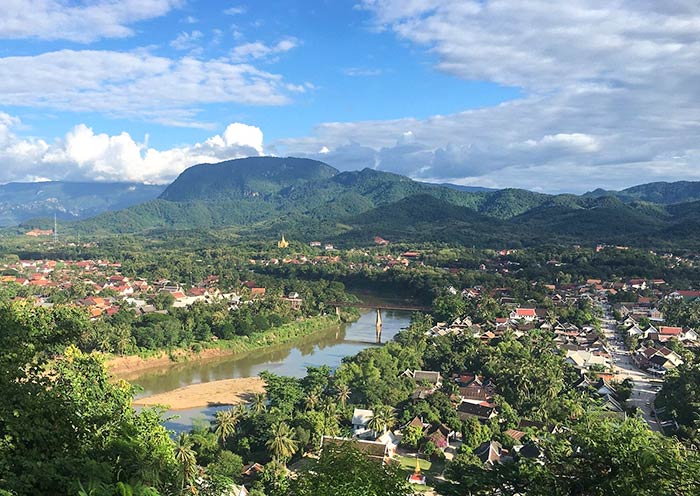


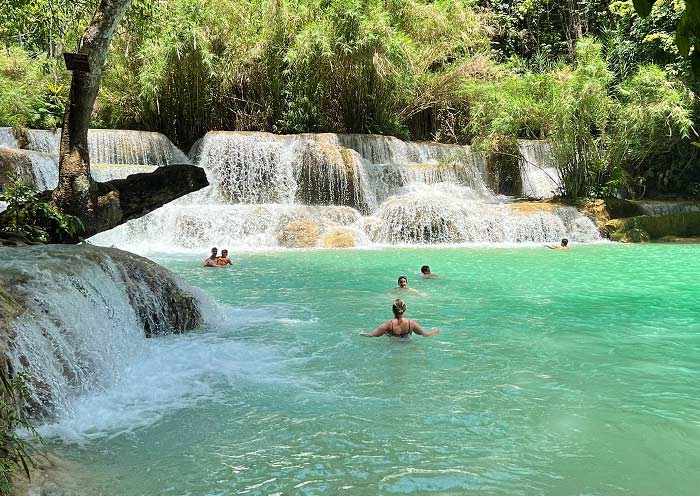
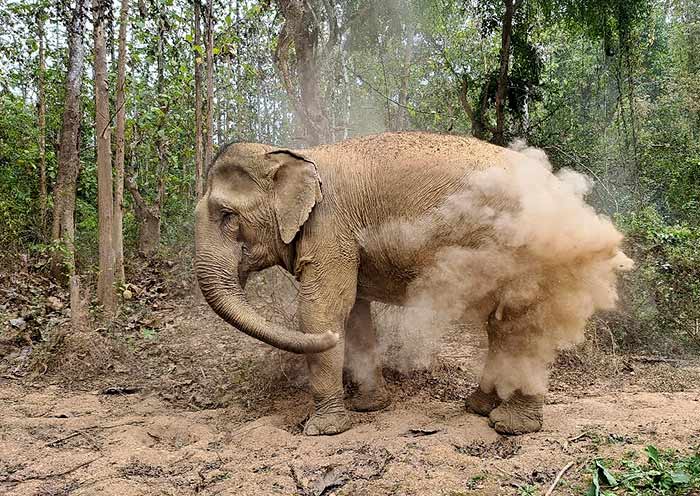
Itinerary at a Glance
Luang Prabang (5 Days)
Old Town of Luang Prabang (World Heritage Site), Mount Phousi Sunset, Luang Prabang Night Market, Royal Palace Museum, Wat Xieng Thong, Wat Aham, Wat Mai, Laos Elephant Sanctuary, Kuang Si Waterfalls, Pak Ou Caves, Mekong River Sunset, Luang Prabang Morning Market, Alms-giving Ceremony
Itinerary Day by Day
Welcome to Luang Prabang, a historic city that once served as the capital of the Kingdom of Laos until 1975. Nestled between the Mekong River and Nam Khan River, Luang Prabang offers a picturesque setting and a delightful mix of experiences for cultural immersion, outdoor adventure, or simply a relaxing escape. Exploring the UNESCO-protected Luang Prabang Old Town, which showcases a remarkable fusion of traditional Lao architecture and structures built by the European colonial authorities in the 19th and 20th centuries. Immerse yourself in the well-preserved townscape of Luang Prabang and discover the hidden gems that await exploration. Enjoy your overnight stay in Luang Prabang and have a good rest.
Free time Ideas:
1. Mount Phousi Sunset: Ascend Mount Phousi for a breathtaking sunset experience. In addition to witnessing the sunset, Mount Phousi is a popular spot known for its panoramic views of Luang Prabang City, the Mekong River, and the Nam Khan River.
2.Luang Prabang Night Market: Explore the vibrant stalls, indulge in street food, and uncover the secrets of Lao cuisine. Immerse yourself in the dazzling array of handicrafts, textiles, and souvenirs that the market has to offer.
Arrival Ideas:
1.Get to Laos by Flight: Located in central Laos, Vientiane serves as the gateway to the country. Wattay International Airport (VTE) is the largest international airport in Laos and a major hub for Lao Airlines.Currently, several countries within Asia, including Thailand, Cambodia, Vietnam, and China, offer direct or connecting flights to Vientiane or Luang Prabang, the two main airports in Laos. There are daily flights between Vientiane and Luang Prabang. You can reach Laos by flight from cities such as Bangkok (Thailand), Chiang Mai (Thailand), Ho Chi Minh City (Vietnam), Hanoi (Vietnam), Siem Reap (Cambodia), Kunming (China), and Kuala Lumpur (Malaysia). Please note that flight routes and availability are subject to change, so it is recommended to check with us for the most up-to-date information on direct flights to Laos (Vientiane or Luang Prabang).
2.Get to Laos by Overland: Get to Laos by Overland: Laos boasts a network of roads that connect its borders with Thailand, Vietnam, Cambodia, and China. The border between Thailand and Laos is one of the most popular entry points for travelers, with options like the First Thai-Lao Friendship Bridge (Nong Khai-Vientiane) and the Chong Mek and Vang Tao border (Pakse). That's why many of our guests choose to combine their Laos tour with visits to other Southeast Asian countries such as Thailand, Vietnam, China, or Cambodia.
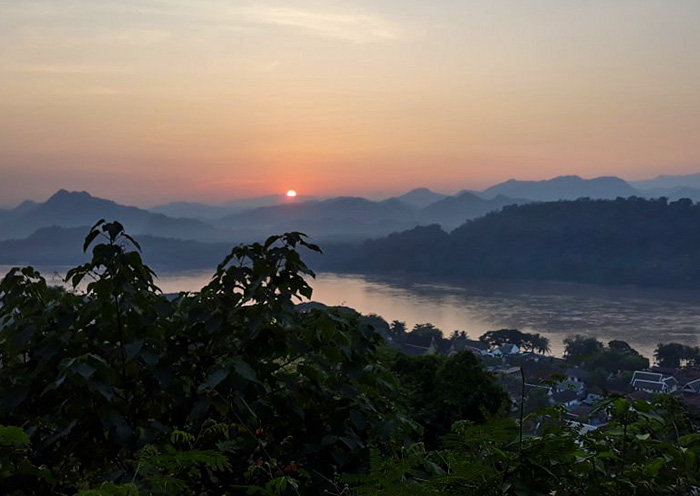

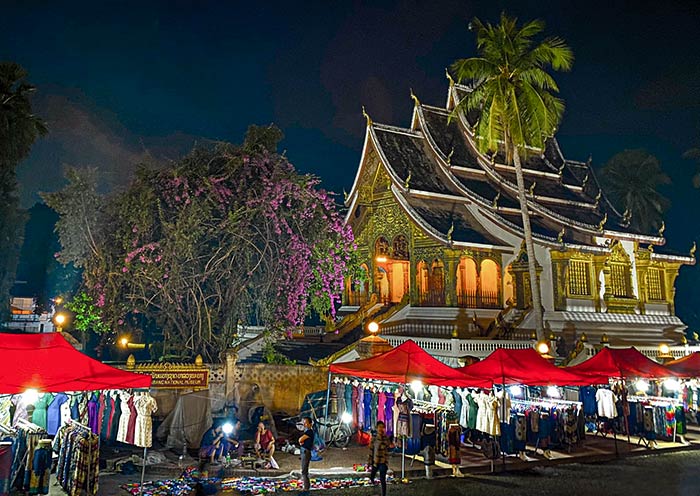
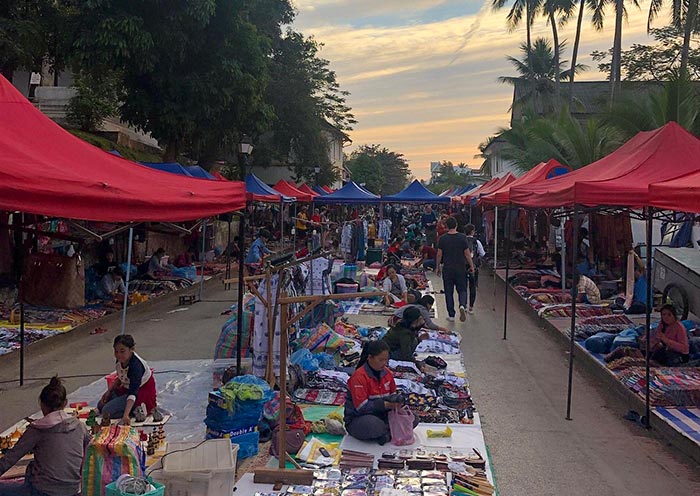
Luang Prabang is renowned for its abundance of Buddhist temples and monasteries. Today, you will enjoy alms-giving ceremony before Temple Hop Tour (Citywalk) at Luang Prabang Old Town (World Heritage Site), visiting Royal Palace Museum, Wat Mai, Wat Aham, Wat Xiengthong, and more.
This morning, you will rise early for an alms-giving ceremony. The daily alms-giving ceremony in Luang Prabang provides a fascinating insight into Laotian Buddhism. This serene and peaceful ceremony takes place at dawn, usually around 5 am to 6:15 am, coinciding with sunrise. By offering food to the monks, believers aim to accumulate merit, which is believed to bring them good karma and improve their future lives. Observing the procession of saffron-clad monks silently collecting alms offers a glimpse into the spiritual life of Laos, showcasing a centuries-old tradition that remains an integral part of Laotian culture. During the ceremony, you may encounter locals dressed in traditional clothing, and you'll witness the town coming alive as the sun rises.
Warm Tips:
1.Before the ceremony, you can purchase offerings, usually sticky rice, from vendors and participate by offering food to the monks.
2.It is important to dress modestly and follow the lead of the locals when offering alms. Show respect throughout the ceremony.
Then, venture to the nearby Morning Market in Luang Prabang (open from 6:00 AM to 9:00 AM) to experience breakfast like the locals do. The market is a haven for trying delicious and unique Lao dishes. Indulge in pre-cooked snacks such as sticky rice, grilled meats, and noodle soups, allowing yourself to savor the flavors of the region.
Then, you will visit the Royal Palace Museum (8-11:30am,1:30-4pm) first. The Royal Palace Museum (National Museum) was once the residence of Laotian kings, offering you a unique opportunity to witness how the Laotian royalty lived. The palace showcases a captivating blend of French colonial and traditional Laotian architecture, reflecting the cultural influences of that era. The museum's exhibits include a wide array of religious objects, royal possessions, weapons, and everyday items, providing a fascinating glimpse into Laotian culture and history. Make sure not to miss the mirrored Throne Hall, where you can marvel at the former royal thrones and catch a glimpse of the crown jewels. Additionally, you can visit Haw Pha Bang, a nearby temple that houses the Prabang Buddha, which is a highly revered national treasure of Laos. Luang Prabang's name derives from the Prabang Buddha statue, meaning "Royal Buddha Image" in Laos.
After that, pay a visit to Wat Mai near the National Museum and across from Mount Phousi. Built in the late 18th century, Wat Mai is a survivor. It's one of the few temples to escape destruction throughout Lao history. This makes it a sacred place for Laotians and a significant landmark in Luang Prabang. The most striking feature is the sim, or ordination hall. This wooden structure boasts a five-tiered roof with sweeping curves that extend almost to the ground. The roof is adorned with golden naga serpents, mythical creatures significant in Lao culture. Inside the sim, you can find a large Phra Bang Buddha statue, believed to date back to the 11th century. This statue is highly revered in Laos.
In the afternoon, hop to Wat Aham. While a smaller temple compared to others in Luang Prabang, Wat Aham holds significance for both animists and Buddhists. The two large banyan trees on the grounds are believed to be residences of the guardian spirits once worshipped at the original shrine. You can step inside the sim (chapel) of Wat Aham to discover vibrant murals adorning the walls. These murals depict Buddhist teachings and Jataka tales, offering a visual representation of Buddhist beliefs. Wat Aham also showcases beautiful Laotian architecture. You can look for details like the stylized stucco tigers guarding the entrance, the statues of temple guardians at the corners, and the two ancient stupas (dome-shaped structures) on the grounds. Don't forget to explore Wat Makmo (That Makmo, Watermelon Stupa) and Wat Wisunarat (Wat Visoun) located around Wat Aham.
At last, head to Wat Xieng Thong. Wat Xieng Thong is a must-visit Buddhist temple in Luang Prabang. It is known for its Laotian design, featuring a sweeping two-tiered roof, intricate carvings, and colorful mosaics. One of the most captivating sights within Wat Xieng Thong is the "Tree of Life" mural displayed on the rear wall of the main chapel. This intricate artwork depicts Buddhist cosmology and the cycle of rebirth. Formerly the royal temple, Wat Xieng Thong was built in the 16th century by King Setthathirath and served as the coronation site for Lao kings. The temple houses several national treasures, including a beautiful Phrabang (a sacred Buddha statue) and the iconic "Sim" (chapel), renowned for its ornately decorated doors. Don't forget to explore the Red Chapel, a smaller structure within the temple complex, which houses a rare reclining black Buddha statue.
Free time Idea:
Take a boat cruise on the Mekong River for sunset and enjoy a scenic perspective from the water. Following the cruise, savor a delightful dinner near the river before returning to your hotel.
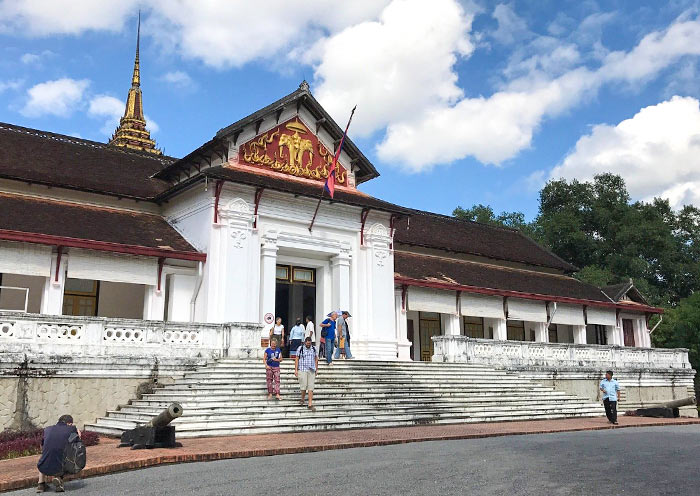
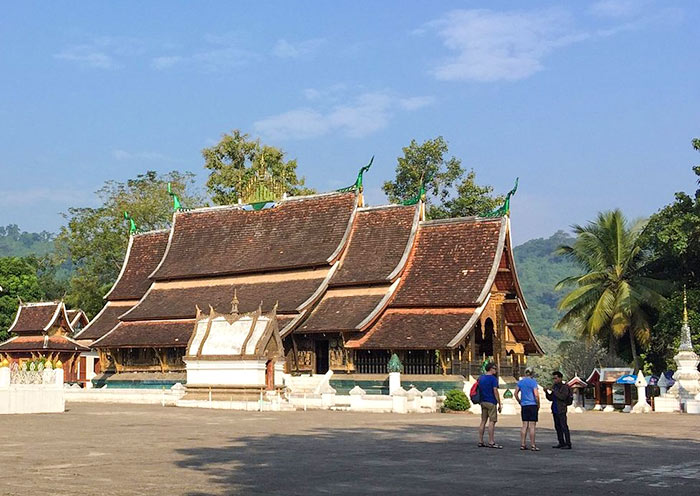


Laos earned the nickname "Land of a Million Elephants" due to its rich population of wild elephants and their significant cultural importance to the Lao people. Elephants were revered as powerful and majestic creatures, symbolizing the strength and authority of Lao kings. They were utilized for royal transportation and played a prominent role in ceremonies. In Lao Buddhism, the white elephant holds a sacred status as a symbol of purity and enlightenment.
This morning, you will head to visit to a local Elephant Sanctuary. You will observe them bathing in the river, feeding them prepared meals, or simply watching them wander through the jungle. This experience will provide you with a deeper understanding of elephant behavior, social structures, and the challenges they face. Witnessing elephants up close in their natural habitat is an unforgettable and remarkable experience.
Free time Idea:
1. Laos Cooking Class: Luang Prabang is a fantastic destination to experience Lao cuisine through a cooking class. Cook unique and flavorful Laos dishes that incorporate ingredients like sticky rice, herbs, chilies, and fresh vegetables.
2. Laos Ethnic Handicraft Workshops: Visit the Traditional Arts & Ethnology Centre (TAEC Museum; closed on Mondays) to gain insights into the lives and cultures of Laotian ethnic minorities, including Hmong, Tai Lue, and more. Explore permanent and special exhibitions displaying artifacts, textiles, and objects that depict the traditions, lifestyles, and customs of Laos' diverse ethnic groups.
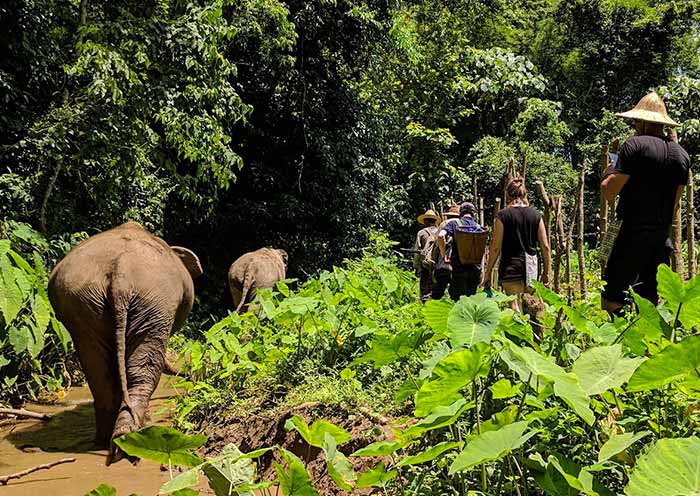
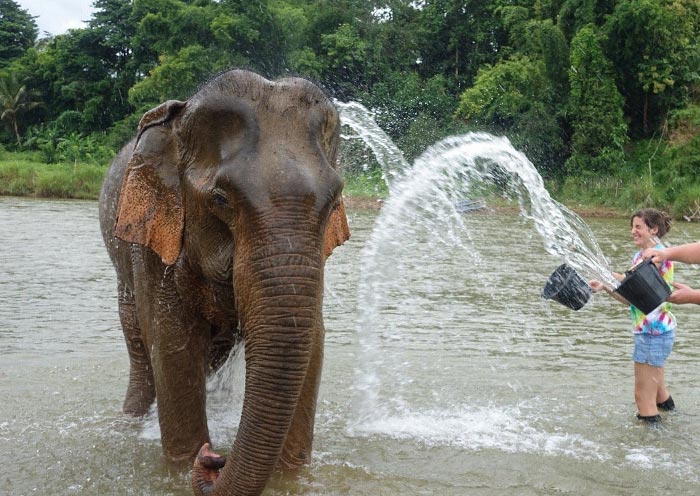
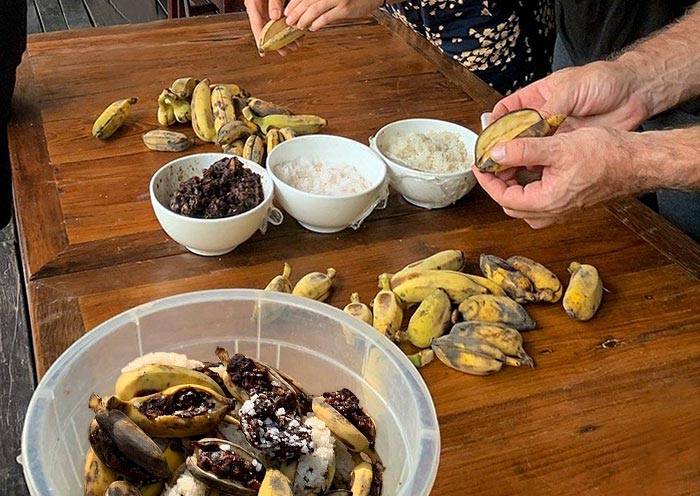
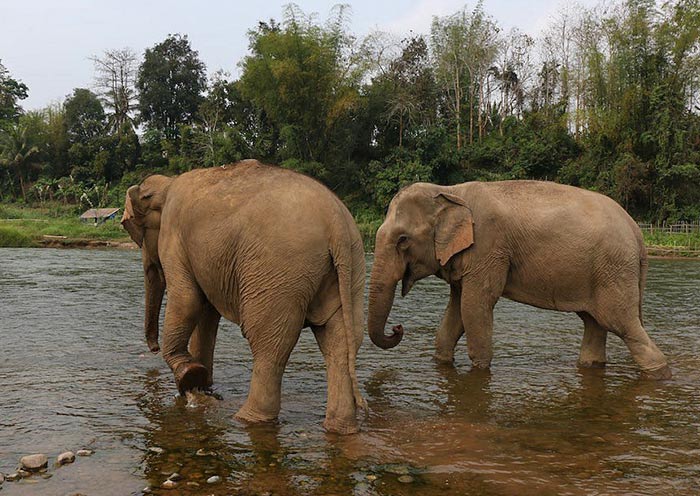
Today is a great day to enjoy an outdoor adventure with a boat trip to the Pak Ou Caves and a unique tour to the Kuang Si Waterfalls (hike & swim), offering a wonderful way to experience the cultural significance and natural beauty of Laos.
During the boat trip to the Pak Ou Caves, you'll sail up the Mekong River, the largest river in Laos. This scenic journey provides breathtaking views of the surrounding mountains, rice paddies, and charming riverside villages. Keep an eye out for local fishermen in their boats. After a relaxing boat ride, you'll reach the base of the limestone cliffs where the Pak Ou Caves are situated. These caves, known as Tham Ting (lower cave) and Tham Theung (upper cave), house hundreds of Buddha images that date back centuries.
Then, head to Kuang Si Waterfalls. Kuang Si Waterfalls (Kuang Xi Falls, Little Jiuzhaigou) is a must-visit place in Laos to enjoy an outdoor adventure (family-friendly) due to its multi-tiered cascade and swimmable natural pools. The turquoise-blue water flows over limestone rocks, creating a series of turquoise pools and waterfalls. The visual beauty of the cascading water and the surrounding lush jungle is a sight to behold. Several of the pristine pools at the base of the waterfalls are shallow enough for swimming (Bring your Swimsuit). Take a refreshing dip in the cool water on a hot Laotian day. The area surrounding the waterfalls offers opportunities for a nature hike through the lush jungle. Keep an eye out for local birds and other wildlife.
Also, if time permits, you can visit the Tat Kuang Si Bear Rescue Centre (optional) located at the foot of the Kuang Si Waterfalls. At the rescue center, you can learn about Asiatic black bears and the ongoing efforts in bear conservation.
If time permit, you can add one day for the Luang Prabang Excursions:
Day Tour at the Living Land Rice Farm: You'll gain a deeper appreciation for Laotian culture, tradition, and the importance of rice agriculture. It's a memorable and enriching experience that will leave you with a newfound understanding of rural life in Laos.
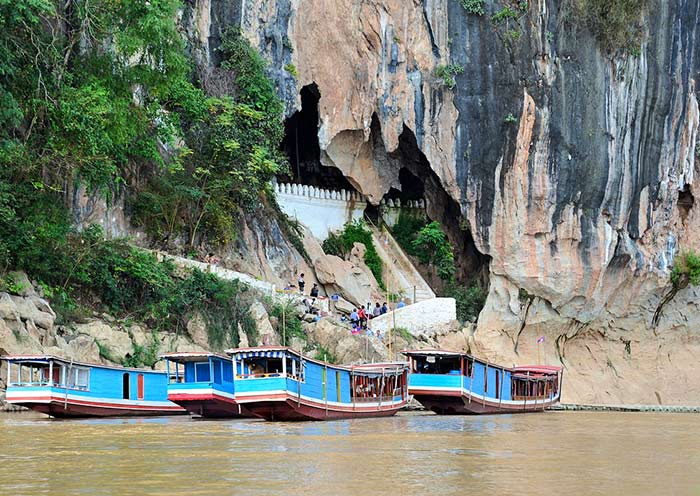
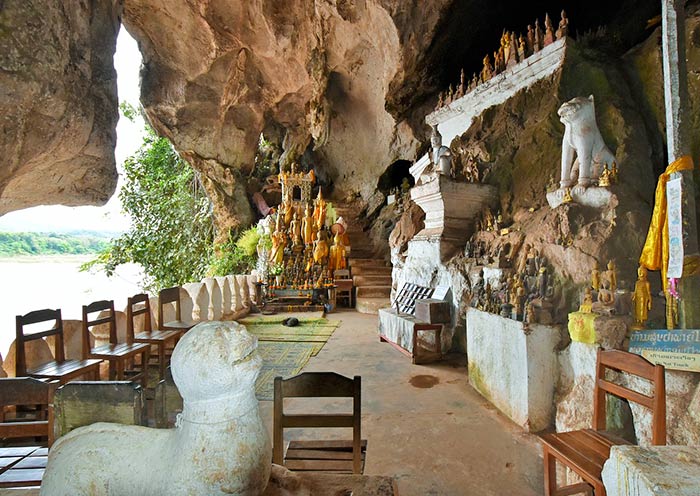

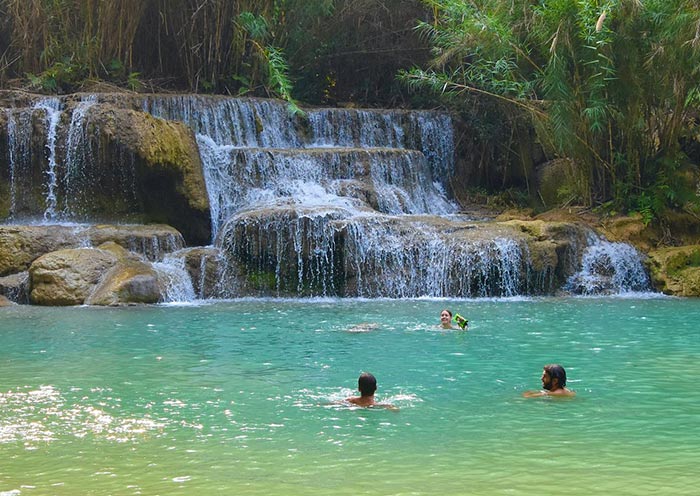
Today, it is time to end your 5-day Lao Prabang Departure tour. You will have some free time in Luang Prabang and explore more on your own till your guide or driver escorts you to the airport for your flight to your next destination.
Extension Ideas:
1.If you prefer to travel longer in Laos, you can extend your trip to other highlighted parts of Laos, such as Vientiane, Vang Vieng, Pakse.
2.If you plan to continue exploring neighboring countries in Southeast Asia or Asia, such as Vietnam, Cambodia, Thailand, or China, don't hesitate to let us know. We can customize your itinerary and assist with travel arrangements.
Thank you for choosing Asia Odyssey Travel (AOT) for your Asia tour, and we are always here working for you and hope to see you again for your next trip to Asia. Safe journey!
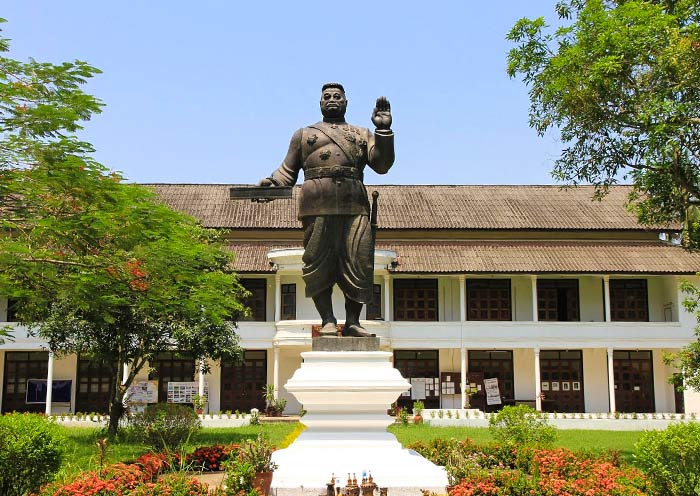

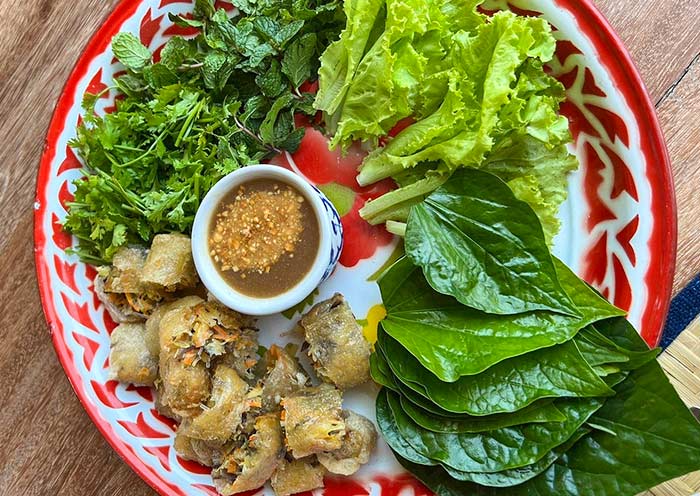
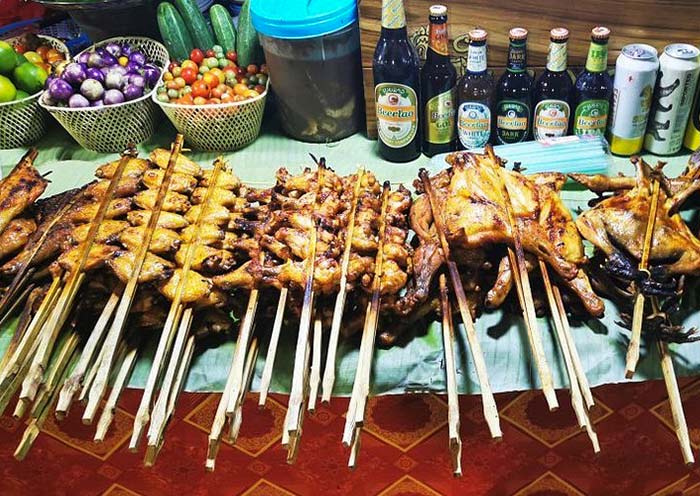
Price: What’s Included & What’s Excluded
What's Included:
What's Excluded:
Important Travel Tips for Visiting Laos
Before your trip, it is important to check the visa requirements for Laos and ensure that you have all the necessary documents.
(1).For the best weather and outdoor activities: Visit during the dry season (October to April).
(2).For fewer crowds and lower prices: Consider visiting during the green season (May to September) or the shoulder months (October & April).
(3).To see waterfalls at their most impressive: Visit during the green season (May to September).
(1) Respectful Dress: Laos is a conservative country. Dress modestly, especially when visiting temples. Opt for clothing that covers shoulders and knees for both men and women. Avoid overly revealing clothing like tank tops or short shorts.
(2) Temple Etiquette: When entering a temple, remove your shoes and socks. Dress modestly (as mentioned above). It's customary to make a small donation upon entering or leaving. Women should avoid physical contact with monks.
(3) Monks: Monks deserve utmost respect. If you encounter a monk, avoid standing taller than them, and always let them walk past first.
(4) Bargaining: Bargaining is expected at markets, but be polite and respectful.
Hotel Conditions for Your Laos Tour
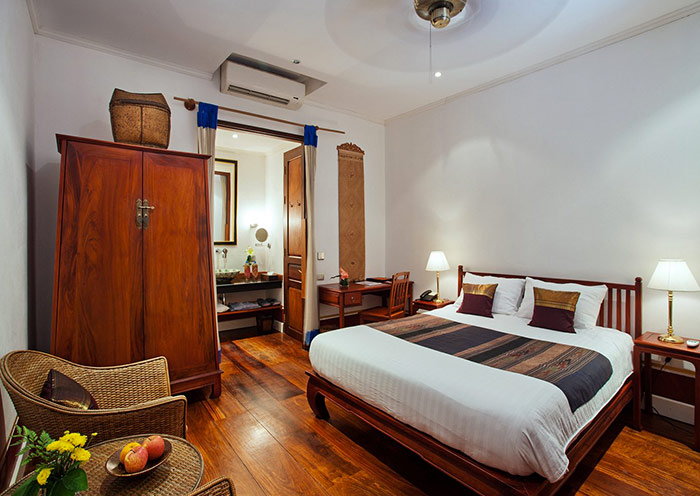

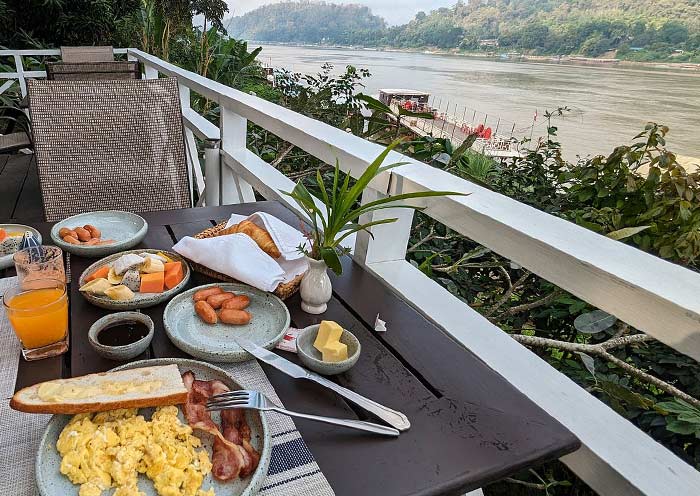
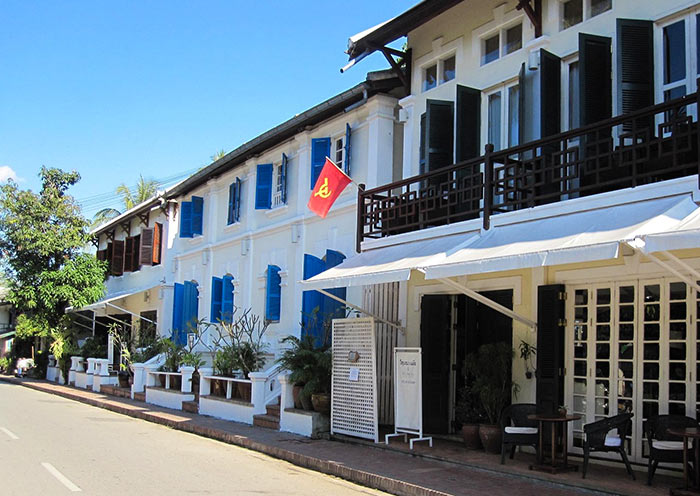
In Laos, to cater to various travelers' preferences and budgets, we offer a range of carefully chosen accommodations, including luxurious 5-star hotels, comfortable 4-star options, and economical 3-star establishments.
Find your perfect hotel for a great experience: We offer a diverse selection of hotels in Laos, catering to all types of travelers. Our knowledgeable travel experts can provide you with various pricing options based on different hotels. Whether you seek a luxurious stay or have specific preferences, our experts will assist you in choosing the best option that suits your needs.
Photo Gallery for This Itinerary
Latest Laos Tours Reviews from Our Customers

Jan Woolley
USA
Date of Experience: Apr 26, 2024
Tour Customized by: Tony
You May be Interested in This Tour: Customized Tour

Russel
New Zealand
Destination(s): Other
Date of Experience: Feb 13, 2020
Tour Customized by: Jamie
You May be Interested in This Tour: Customized Tour
Price: Request
(Based on a private tour for two people. Price varies depending on program, travel date, number of people.)
Free Enquiry! You don’t need to pay for the reservation.
- United States (+1)
- Australia (+61)
- Singapore (+65)
- Malaysia (+60)
- Philippines (+63)
- Canada (+1)
- Italy (+39)
- Indonesia (+62)
- United Kingdom (+44)
- Spain (+34)
- Mexico (+52)
- Hong Kong (+852)
- Thailand (+66)
- United Arab Emirates (+971)
- New Zealand (+64)
- South Africa (+27)
- Germany (+49)
- Brazil (+55)
- India (+91)
- France (+33)
- Vietnam (+84)
- The Netherlands (+31)
- Saudi Arabia (+966)
- Ireland (+353)
- Argentina (+54)
- Switzerland (+41)
- Romania (+40)
- Pakistan (+92)
- Japan (+81)
- Portugal (+351)
- Bangladesh (+880)
- South Korea (+82)
- Puerto Rico (+1)
- Türkiye (+90)
- China (+86)
- Belgium (+32)
- Qatar (+974)
- Greece (+30)
- Taiwan (+886)
- Austria (+43)
- Poland (+48)
- Israel (+972)
- Chile (+56)
- Sri Lanka (+94)
- Nigeria (+234)
- Peru (+51)
- Colombia (+57)
- Hungary (+36)
- Nepal (+977)
- Denmark (+45)
- Bulgaria (+359)
- Norway (+47)
- Slovenia (+383)
- Sweden (+46)
- Kuwait (+965)
- Costa Rica (+506)
- Ecuador (+593)
- Venezuela (+58)
- Malta (+356)
- Croatia (+385)
- Tunisia (+216)
- Czechia (+420)
- Mongolia (+976)
- Bahrain (+973)
- Mauritius (+230)
- Papua New Guinea (+675)
- Cambodia (+855)
- Dominican Republic (+1)
- Luxembourg (+352)
- Finland (+358)
- Guatemala (+502)
- Myanmar (+95)
- Maldives (+960)
- Slovakia (+421)
- Laos (+856)
- Serbia (+381)
- Brunei (+673)
- Oman (+968)
- Macao (+853)
- Panama (+507)
- Morocco (+212)
- Jordan (+962)
- Georgia (+995)
- Fiji (+679)
- Bolivia (+591)
- Lithuania (+370)
- Bahamas (+1)
- Cyprus (+357)
- Latvia (+371)
- Bhutan (+975)
- Iraq (+964)
- Iran (+98)
- Kenya (+254)
- Jamaica (+1)
- Zimbabwe (+263)
- Azerbaijan (+994)
- Uruguay (+598)
- Estonia (+372)
- Andorra (+376)
- Cameroon (+237)
- Ghana (+233)
- Kazakhstan (+7)
- Nicaragua (+505)
- Egypt (+20)
- Russia (+7)
- Albania (+355)
- Réunion (+262)
- Montenegro (+382)
- Algeria (+213)
- Afghanistan (+93)
- Martinique (+596)
- Uganda (+256)
- Honduras (+504)
- North Macedonia (+389)
- Trinidad and Tobago (+1)
- Suriname (+597)
- Antigua and Barbuda (+1)
- Zambia (+260)
- Ukraine (+380)
- Armenia (+374)
- Barbados (+1)
- Belarus (+375)
- Palestine (+970)
- Lesotho (+266)
- Moldova (+373)
- Ethiopia (+251)
- French Polynesia (+689)
- Gambia (+220)
- Guam (+1)
- Gibraltar (+350)
- Isle of Man (+44)
- New Caledonia (+687)
- El Salvador (+503)
- Comoros (+269)
- Seychelles (+248)
- Chad (+235)
- Samoa (+685)
- Cook Islands (+682)
- Palau (+680)
- Paraguay (+595)
- DR Congo (+243)
- Solomon Islands (+677)
